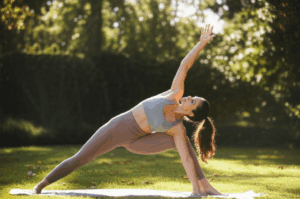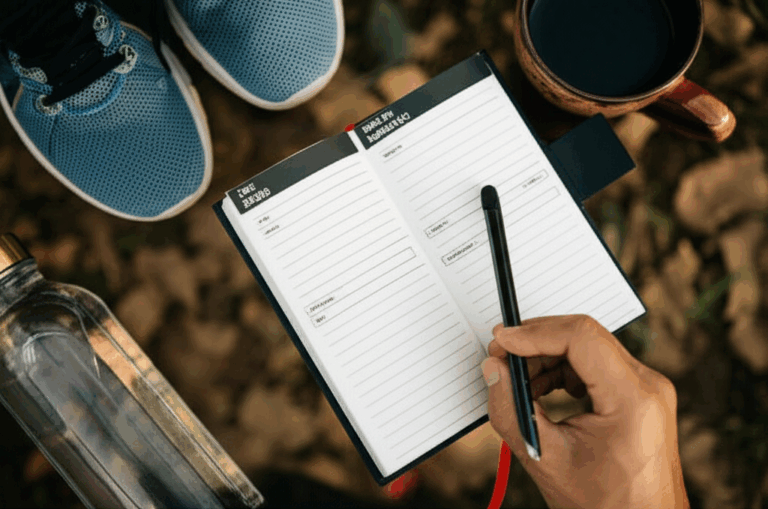Walking, often underestimated, is a powerful and accessible pathway to improved health and well-being. It’s a low-impact exercise that offers a myriad of benefits, from boosting cardiovascular health and strengthening bones to enhancing mood and managing weight. For many, the challenge isn’t recognizing the value of walking, but rather establishing and maintaining a consistent, sustainable routine.
This guide distills the process into three manageable steps, making it easy for anyone to integrate walking into their daily life and enjoy its lasting advantages.

Step 1: Laying the Foundation – Assess, Plan, and Equip for Success
Before lacing up your shoes, a little preparation goes a long way in ensuring your walking routine is not only effective but also enjoyable and sustainable.
Assess Your Current Fitness Level
Understanding your starting point is crucial for setting realistic and achievable goals. If you’ve been largely inactive, begin by tracking your current daily steps for a few days using a pedometer or smartphone app. This baseline will help you understand your average activity level. It’s always wise to consult with a healthcare provider before starting any new exercise regimen, especially if you have underlying health conditions.
Set Realistic Goals
Goals act as your roadmap and motivation. Employ the SMART criteria: Specific, Measurable, Achievable, Relevant, and Time-bound.
- Specific: Instead of “I want to walk more,” aim for “I will walk for fitness.”
- Measurable: Define how you’ll track progress. This could be “I will walk 30 minutes a day, five days a week” or “I will aim for 7,000 steps daily.”
- Achievable: Start small and build up. If 20 minutes seems daunting, begin with 10-15 minutes a few times a week. Gradually increase duration by 5-10 minutes per week.
- Relevant: Connect your walking to a personal “why,” such as improved energy, stress reduction, or better sleep.
- Time-bound: Set a start date and specific milestones. For example, “I will achieve 150 minutes of moderate walking per week within the next month.”
Choose Your Gear
While walking requires minimal equipment, the right gear can significantly enhance comfort and prevent injury.
- Footwear: Invest in comfortable, supportive athletic shoes that fit well and offer good arch support and cushioning. Consider getting fitted at a specialized shoe store to ensure the correct size and type for your foot.
- Clothing: Opt for comfortable, weather-appropriate layered clothing. Moisture-wicking fabrics are excellent for managing sweat. For walks in low light, wear reflective clothing and bright colors to ensure visibility.
- Hydration: Carry a water bottle, especially for walks longer than 15-20 minutes or in warm weather. Staying hydrated is critical for performance and preventing fatigue.
- Optional (but helpful): A small backpack for essentials, a fitness tracker or smartphone app to monitor progress, and a hat or sunscreen for sun protection.
Pick Your Path (Where and When)
Consistency thrives on routine. Decide on a consistent schedule for your walks and choose enjoyable, safe routes. This could be around your neighborhood, a local park, or even indoors on a treadmill or in a mall if weather is an issue. Planning ahead and blocking out time in your calendar can help solidify the habit.

Step 2: Building Momentum – Start Smart, Stay Consistent
With your foundation laid, the next step is to initiate your routine and build momentum through smart practices and unwavering consistency.
The “Start Slow” Mantra
One of the most common mistakes beginners make is starting too aggressively. Begin with short, gentle walks at an easy pace. For example, start with 10-15 minute walks a few times a week. This allows your body to adapt, reduces the risk of injury, and prevents burnout. Always include a brief warm-up by walking at an easier pace for 5 minutes before increasing your speed.
Gradual Progression
As your fitness improves, incrementally increase the duration, frequency, or intensity of your walks.
- Duration and Frequency: Add 5-10 minutes to your walks each week, or increase the number of walking days. The general recommendation for most healthy adults is at least 150 minutes of moderate aerobic activity per week, spread across several days.
- Intensity: Once comfortable with duration, you can increase intensity by walking faster, incorporating intervals of brisk walking, or tackling routes with inclines or varied terrain. A brisk pace means you can talk but not sing.
- Form: Pay attention to your walking posture: stand tall, shoulders relaxed, engage your core, and swing your arms naturally (bent at 90 degrees) with a heel-to-toe stride. Good form increases efficiency and prevents strain.
Embrace Consistency Over Intensity
Consistency is the bedrock of a sustainable routine. It’s better to take shorter, more frequent walks than to attempt infrequent, overly ambitious ones. Make walking a non-negotiable part of your day, like any other important appointment. Small habit changes add up to significant transformations.
Listen to Your Body
Pay close attention to how your body responds. Some soreness is normal when starting, but pain is a warning sign. If you experience discomfort, slow down, take breaks, or rest. Pushing through pain can lead to injuries that derail your progress. Don’t forget to cool down with a slower pace for 5-10 minutes and gentle stretches after your walk.

Step 3: Sustaining the Journey – Enjoy, Adapt, and Overcome Challenges
Maintaining a walking routine long-term requires enjoyment, flexibility, and strategies to overcome inevitable hurdles.
Make It Enjoyable
Walking shouldn’t feel like a chore. Find ways to keep it engaging:
- Vary Your Routes: Explore new parks, trails, or neighborhoods to prevent boredom.
- Walk with Companions: Invite friends, family, or even your dog to join you. Walking with others can boost motivation and accountability.
- Audio Entertainment: Listen to music, podcasts, or audiobooks to make the time fly by. If walking outdoors, keep one earbud out for awareness.
- Mindfulness: Some days, leave technology behind and focus on your surroundings, the fresh air, and the rhythm of your steps.
Track Your Progress
Seeing how far you’ve come can be incredibly motivating. Use a fitness tracker, a simple logbook, or an app to record your distance, time, and steps. Celebrate milestones, big or small, to reinforce your commitment.
Adapt to Challenges
Life happens, and sometimes your routine will be disrupted. Instead of giving up, adapt.
- Bad Weather: Have a backup plan, such as walking indoors at a mall, using a treadmill, or trying a different type of indoor exercise.
- Busy Schedule: If your usual walking time is unavailable, look for shorter opportunities to weave steps into your day. Park further away, take the stairs, or walk during phone calls. Even short bursts of activity are beneficial.
- Loss of Motivation: Remind yourself of your “why.” Revisit your goals, try a new route, or seek out a walking buddy.
The Unseen Benefits of a Regular Walking Routine
Beyond the physical, a consistent walking routine nurtures your overall well-being. Regular brisk walking can significantly improve cardiovascular health, lower blood pressure, reduce the risk of heart disease, stroke, and type 2 diabetes. It strengthens bones, lubricates joints, and helps with weight management. Moreover, walking can boost immunity, improve mood, reduce stress and anxiety, enhance cognitive function, and lead to better sleep. It’s a holistic approach to health that’s both simple and profoundly effective.
By following these three steps – laying a solid foundation, building momentum with smart practices, and actively sustaining your journey – you can successfully integrate a powerful and sustainable walking routine into your life, reaping its countless benefits for years to come.







